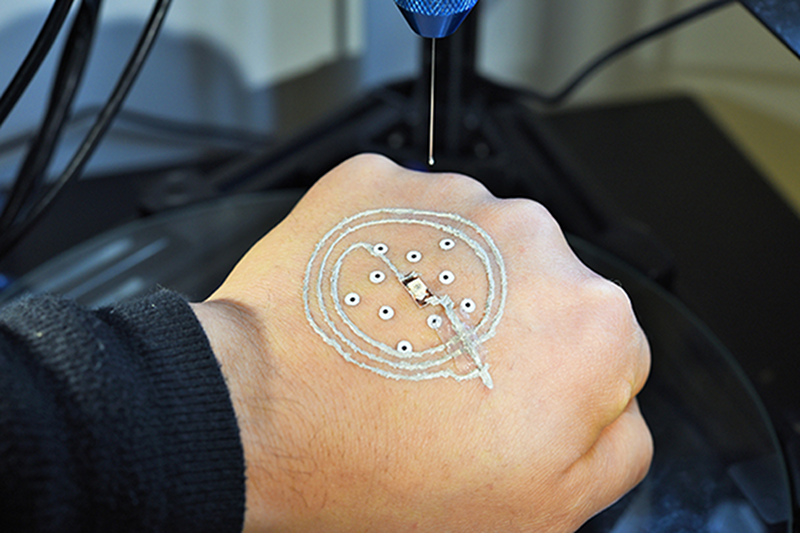Some argue that the original Star Trek series predicted the flip phone. Later installments of the franchise used little badges. But Babylon 5 had people talking into a link that stuck mysteriously to the back of their hand. This might turn out to be true if researchers at the University of Minnesota have their way. They’ve modified a common 3D printer to print electronic circuits directly to the skin, including the back of the hand, as you can see in the video below. There’s also a preview of an academic paper available, but you’ll have to pay for access to that, for now, unless you can find it on the gray market.
In addition, the techniques also allowed printing biologically compatible material directly on the skin wound of a mouse. The base printer was inexpensive, an Anycubic Delta Rostock that sells for about $300.
The printer uses a specialized ink that contains silver flakes. It cures at room temperature which is good because you probably don’t want hot plastic burning into the back of your hand. That means the extrusion is more like a paste printer. However, that’s not the main innovation. The primary problem with printing on a person’s body is that people move, even if they try not to.
The new system puts temporary markers on the skin. The printer scans and adjusts its movement to match up with the moving hand or other body parts. Of course, to create really practical electronics, you’ll surely need some components that can’t be printed. In the paper, they show an LED with a 3D printed inductor that can couple to a power source.
This reminded us of FRESH, especially the part about printing directly into a wound. Who knows? This could lead to a whole new round of body modifications.

















A more realistic application of the tracking technology would be automated tattooing.
Are you talking about building Mr. Rorque a robot? ;-)
Getting a tat from a robot in a dirty back alley in some enormous Chinese city just might be the epitome of cyberpunk. Can’t wait.
For the infection to set in or the respiratory illness ?.
It’s the pin-through-hole pads on the surface that scare me. Is there another reverse pattern on the other side and plans to drill through and connect opposite pads with wires? LED’s installed on the skin would have appeal for some people but I wouldn’t use lone needles like what we saw here. One bad entry in the gcode and it becomes a very bad day. ????
Shocking.. ;-)
In B5 the link was a metal cased device much like the com badge, was explained as having some kind of molecular adhesive backing that attaches to your hand, could detect who it was attached to to prevent unauthorised use. It could be easily removed at the end of the work day without difficulty.
Not really the same thing here, but interesting nonetheless.
Well, a communicator wasn’t exactly a flip phone either, but I just thought the picture reminded me of Sinclair’s link.
The entire idea seems like a naive solution to a nonexistent problem. My body is already full of electronic circuits, they are called nerve cells and they involve all manner of sensors and logic components as wells as storage. I honestly believe that by the time we have a genuine need for body integrated electronics (that is not already served by a more traditional approach) we will have implantable, tissue based, systems that will be grown from modified versions of our own stem cells so that our bodies can maintain them over the long term and that are fully integrated into our existing natural systems.
I thought silver nanoparticles could be toxic… Maybe a carbon ink or a conductive polymer might be better suited for biocompatibility.
Hey Williams,
I have gone through your post. It’s really a nice post. It’s really amazing that 3D electronics is direct to the body is useful for tracking action. I had contacted with Iannone3d.com & they said that they will work on it earlier. So could you please share some merit & demerit of this application?
Thank you..